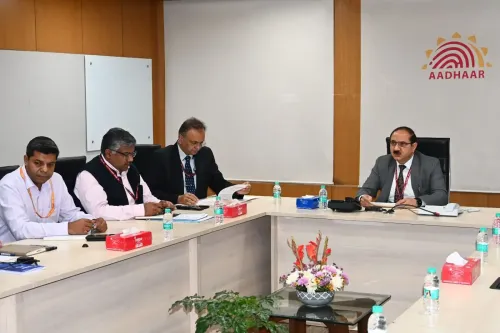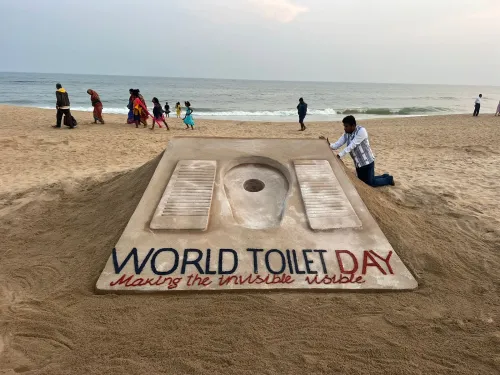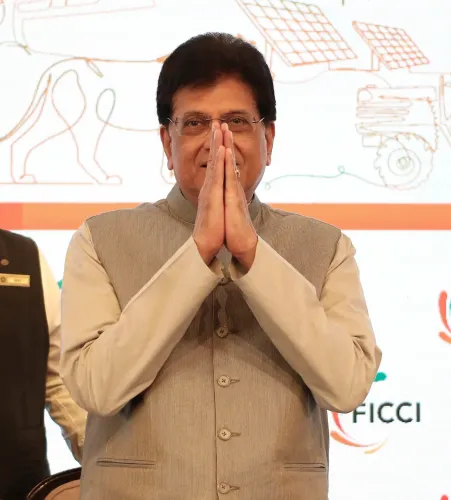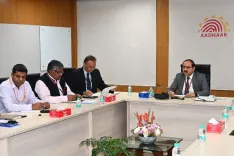Are Tariffs Made in the USA While Resilience is Crafted in India?

Synopsis
Key Takeaways
- India maintains strong negotiation tactics amid US tariffs.
- The bilateral trade agreement is nearing completion, focusing on tariff reductions.
- Key sectors like pharmaceuticals and textiles are poised for growth.
- India's resilience in negotiations strengthens its global trade position.
- The agreement aims to embed economic cooperation within a strategic partnership.
New Delhi, Nov 19 (NationPress) When President Donald Trump of the United States imposed a 25 percent “reciprocal tariff” on India, many anticipated that New Delhi would yield to pressure; and when he further added another 25 percent as a punitive action against Russian oil purchases, speculation arose that shipments from Moscow would cease immediately. Contrary to expectations, New Delhi engaged in calculated negotiations, maintaining open lines of communication while conveying strong messages regarding its willingness to safeguard its economic interests.
Recently, President Trump has been signaling a desire to strengthen relations with India. Currently, both nations are on the cusp of finalizing the initial phase of a bilateral trade agreement (BTA), which aims to settle tariff conflicts and broaden market access.
Bilateral discussions between India and the US have progressed significantly, with officials indicating that the first segment of the BTA is “nearing closure”.
This phase mainly addresses the 50 percent tariffs that the US has levied on Indian products.
In the meantime, India's Commerce Minister, Piyush Goyal, has stressed that any agreement must be fair, equitable, and balanced, protecting sensitive domestic industries like agriculture and fisheries.
The discussions can be categorized into two segments: one focusing on reciprocal tariffs and another on broader market access and regulatory matters.
The tariff arrangement is expected to be concluded soon, while the second segment may require additional time. The initial phase of the BTA may lead to some reduction in the 50 percent tariff burden, enhancing the competitiveness of Indian exports.
Industries such as pharmaceuticals, textiles, and engineering goods, which are already responsible for over $50 billion in exports to the US by 2025, stand to benefit further. For India, this agreement could yield significant advantages through lowered trade barriers, enhanced export opportunities, and a deeper strategic alignment with Washington.
Thus, the political determination, resilience, and adept political maneuvering of the Indian government have ensured that the Indo-US trade discussions, previously entangled in tariff disputes and geopolitical tensions, are progressing toward a constructive outcome.
New Delhi has successfully transformed a potentially confrontational scenario into a collaborative partnership. The government has ensured that officials highlight the broader Indo-US alliance, encompassing defense, technology, and energy, framing trade discussions as part of a strategic partnership rather than merely transactional.
It has consistently emphasized that any agreement must be fair, equitable, and balanced, with protections for farmers, fishermen, and small manufacturers. This resilience has reassured domestic stakeholders while bolstering India's negotiating stance.
Meanwhile, despite US apprehensions regarding India’s Russian oil imports, New Delhi has prioritized its energy security while continuing trade discussions.
This reflects India’s capability to endure external pressures without derailing negotiations. Six rounds of discussions have already occurred, demonstrating India's commitment to navigating complexities and maintaining momentum.
Clear indications suggest that the first segment of the agreement could be finalized by late 2025, potentially this month, reflecting a strong political will from both nations to overcome challenges.
India’s political leadership has framed the trade deal as a matter of national interest, ensuring support across various sectors and minimizing domestic opposition.
India's ability to negotiate firmly yet constructively enhances its credibility in global trade diplomacy, positioning it as a significant player in supply chain diversification.
As highlighted in a report by SBI Capital Markets, 'Tariffs are Made in the USA, but Resilience is Made in India', Washington’s aggressive tariff policies have been described as a “key flashpoint” aimed at exerting pressure on India’s external sector.
Ultimately, India’s position has proven effective, with the proposed agreement reinforcing Indo-US ties beyond mere trade, embedding economic collaboration within a broader strategic context.









